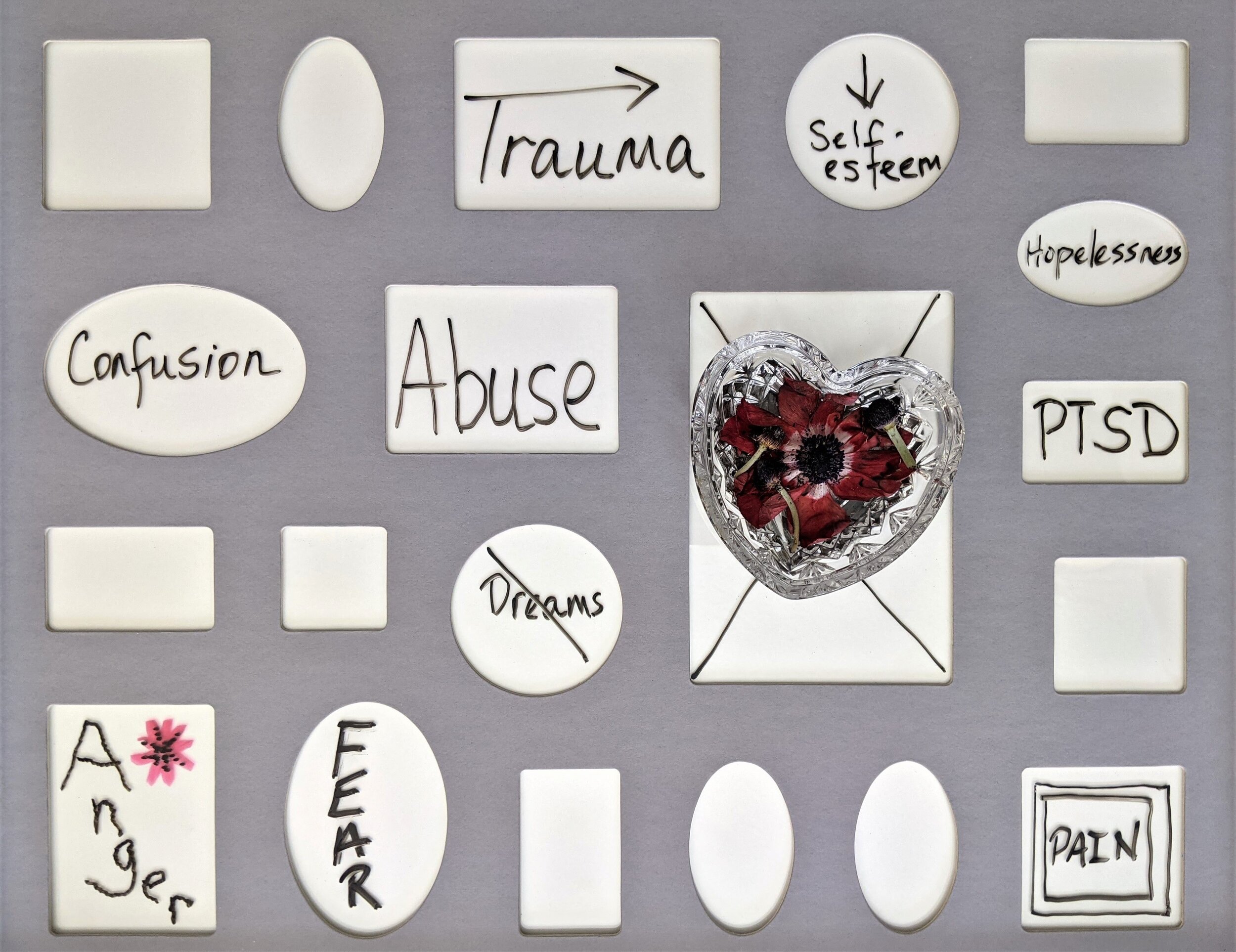In all my years of being a therapist, I have yet to find someone who doesn’t have a viscerally-felt answer to the question, “Are there any painful, distressing events that happened to you when you were younger that continue to bother you today?” Nearly everyone to whom I’ve ever asked that question has at least one or two moments from childhood/adolescence/young adulthood that immediately pop into their heads. Most times people answer with some embarrassment thinking that they should be over it by now or that it’s silly that it continues to bother them, but rarely is there any hemming and hawing. I always reassure them that they are not alone. It can be surprising to look back at distressing and perhaps embarrassing memories and find yourself momentarily trapped in the pain and the shame, but it quite literally happens to everyone. When you go through terrible moments, your brain doesn’t have room for anything but survival and emotion. The rational, logical and verbal parts of your brain either totally shut down or are incomprehensible to the rest of your brain. Bridging the proverbial divide between your emotional and cognitive parts allow for the possibility to process the traumatic moment, making it simply a memory rather than something you relive.
Unfortunately, bridging that divide is sometimes easier said than done. But, there’s hope!
I’ve recently begun training in the practice of EMDR therapy. EMDR, or Eye-Movement Desensitization and Reprocessing, is a form of therapy that was initially developed by Francine Shapiro in the treatment for PTSD and trauma. Since its founding, therapists have been using EMDR to treat depression, anxiety, phobias, and more. The goal of EMDR therapy is to build and shore up the pathways between the emotional part of your brain, the limbic system, and the cognitive part of your brain, the neocortex. I’ll add that the limbic system also tends to hang out, hand in hand, with your brain stem, where it’s all about survival and safety. Through the phases of EMDR treatment, you develop skills that help you to find emotional grounding. In other words, if you find yourself totally overwhelmed by the intensity of the memories, images, or feelings, you’ll have tools that enable you to find greater calm and regain some control over your emotions. With those resources in hand, you’ll be asked to intentionally bring some really difficult images, thoughts, and physical sensations to mind and simply notice what may come up for you as you focus on the distress. Now, here’s where things start to get weird. (At least, in reading about it. In truth, the practice of it isn’t nearly as strange!)
You’ll be asked to focus on those memories while also engaging in some bilateral external stimulation. What the heck does that mean? Well, you might be asked to look at and follow the path of a pen held up by your therapist from side to side or to tap either side of your legs or chest. There’s something about the simultaneous attention to a dual-sided stimulus that seems to allow you to look at your painful memory without getting totally overwhelmed and flooded. Because you have a touch more control and aren’t getting completely trapped by the memory, a tiny window of opportunity opens up to allow our logical and wise neocortex to start making sense of the traumatic event or more accurately to dispel all the negative self-talk, self-blame, and self-criticism that likely you’ve internalized since that moment. (You know what I mean, all the statements you’ve been saying to yourself for forever like, “It’s my fault,” “I have to be perfect,” “I deserved it,” “I’m ugly,” “I’m a failure,” etc, etc. Honestly, it makes me sad just typing that out, knowing how many people exist with these fears tightly held deep down.) As you continue through the stages of EMDR therapy, that tiny window becomes wider and stronger, giving you greater freedom from your pain and access to positive statements about yourself that you can actually believe.
So, what do you think? Are you weirded out? Could it be for you? That’s obviously a very personal question with a personal answer but for the most part, I can reassure you that it’s probably worth it to see if EMDR could help you if you’re feeling stuck in your distress, regardless of how small or large you feel it is. It could be a memory of being bullied in grade school, it could be getting dumped by your partner, it could be a traumatic birth story, heck, it could be living through the anxiety and isolation of a pandemic! While I can’t guarantee that you’ll find relief since no form of therapy is one-size-fits-all, I can guarantee that your trauma isn’t too big and you’re not too broken for EMDR to potentially be effective. Now read this next line carefully, it’s important. Because you are a human being, you deserve to be free from pain and distress.
To learn more about whether or not EMDR therapy may be right for you, check out EMDR Trauma Treatment and click here to schedule an appointment with one of our trauma therapists.

